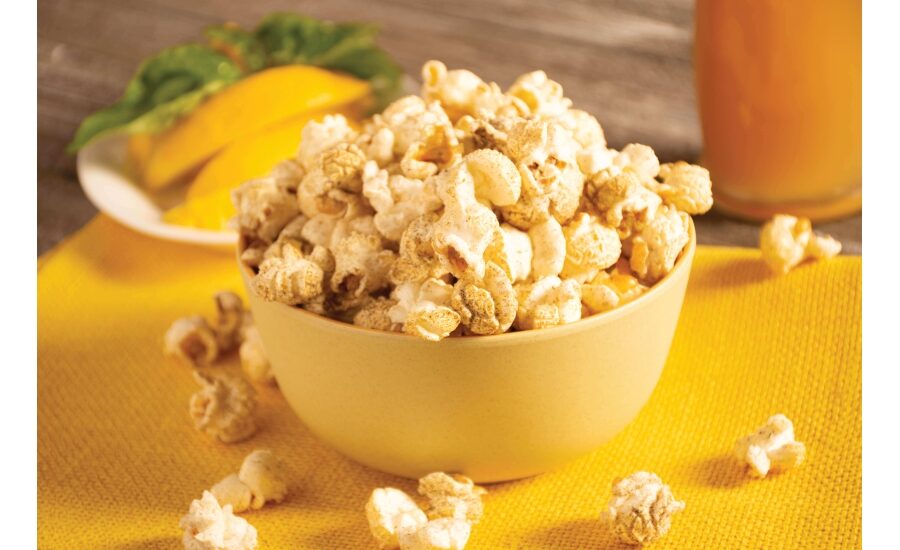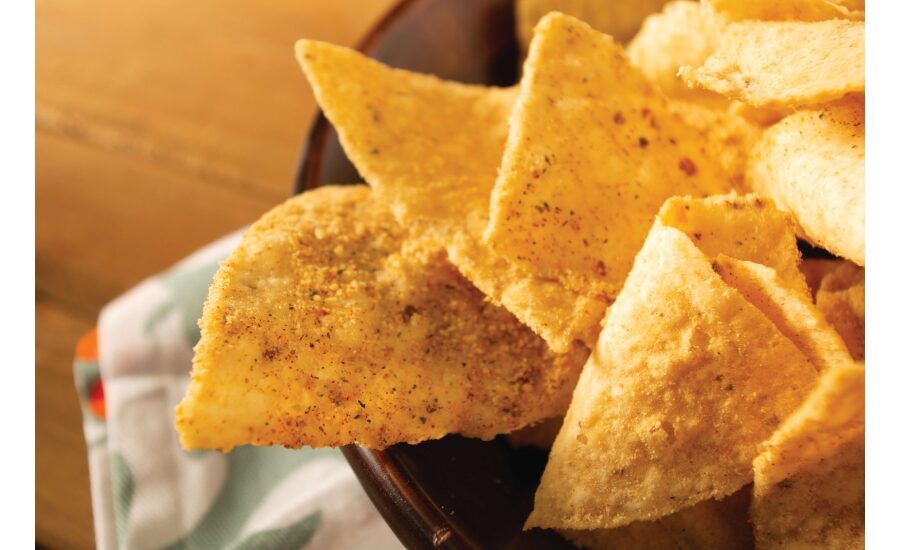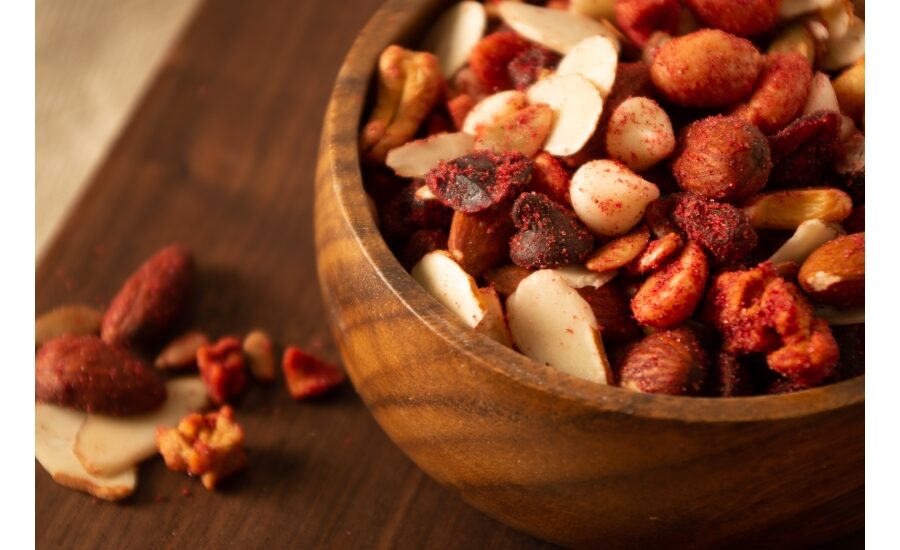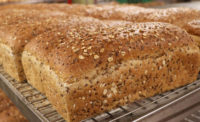Culinary inspiration for snack and bakery R&D
We recently reached out to Chef Howard Cantor to learn more about how he identifies flavor opportunities for potential use in new product development.








 Flavor trends across the snack and bakery market can gain inspiration from any number of directions, including prevailing currents in foodservice, ethnic items gaining more-widespread appeal, interest in better-for-you foods, and more.
Flavor trends across the snack and bakery market can gain inspiration from any number of directions, including prevailing currents in foodservice, ethnic items gaining more-widespread appeal, interest in better-for-you foods, and more.
We recently reached out to Howard Cantor, corporate executive chef, Fuchs North America, Hampstead, MD, to learn more about how he identifies flavor opportunities for potential use in new product development. He is a classically trained chef through Johnson & Wales University and an American Culinary Federation apprenticeship. He has owned restaurants, served as the executive chef at a beach club in the U.S. Virgin Islands, and worked in R&D for food manufacturers and a restaurant chain.
Douglas J. Peckenpaugh: What do you see as some of the top culinary trends in today’s national U.S. restaurant market?
Howard Cantor: We track culinary trends year-round at Fuchs North America, and we pay close attention to what’s trending in foodservice, as we know that that’s where many trends start. When it comes to culinary trends, we look at what menu items and trends are growing in popularity with younger consumers, as they are typically responsible for setting most food trends.
In the past year or so, we’ve seen a major increase in demand for tangy, sour, and fermented ingredients. This is due to a variety of factors, including the perceived health benefits of eating such items. The rise in specific ethnic cuisines, like Korean, Persian, and Filipino, that typically feature fermented or sour ingredients has also contributed to this trend. These types of ingredients, such as miso, yuzu, and vinegars, have been on the rise in foodservice, and likely will be gain more steam in the snack and baked good aisles of the grocery store.
Another trend in U.S. restaurants that’s grown rapidly is the call-out of specific preparation and cooking methods. We see words like “smoked,” “braised,” “fire roasted,” and “grilled” appearing more in the names of menu items. It’s no secret that consumers are growing increasingly curious of how their food is prepared. The flavor profiles that these cooking methods can easily translate to seasonings that consumers will be delighted to see on their favorite potato chips or popcorn.
DJP: How can developers of snacks and baked goods logically translate some of those trends to practical R&D concepts?
HC: Once a particular dish, flavor, or ingredient gains traction in foodservice to the point that consumers are beginning to develop some familiarity with it, there’s a prime opportunity to take that trending item and turn it into a seasoning for a mainstream snack or bakery product. Sriracha is a classic example of this. After it began trending in foodservice and generating quite a bit of buzz about a decade ago, it began popping up as a flavor in the snack aisle. As trends like the use of pickled and fermented ingredients in menu items continue to attract consumers, we’ll likely see more flavors like kombucha, kimchi, and giardiniera featured as flavors for snacks.
It takes some creativity, too. For us at Fuchs North America, it’s all about using flavors along with some creative use of whole dehydrated ingredients. Working on the bench and playing with new flavors, new technologies, and all the new dehydrated ingredients in the marketplace make it much easier than it has been in the past to take something that’s trending in the culinary world and turning it into a seasoning for snack and bakery products.
DJP: What does the idea of “culinary authenticity” mean to you?
HC: To me, it’s the ability to translate the “culinary gold standard”—that dish you remember eating in a restaurant, or at your grandmother’s table—into a seasoning blend. Taking that memory and turning it into a seasoning using formulation is equal parts art and science. It’s understanding the creative process that goes into recreating that memory and going back into your sensory library, remembering the way it looked, the way it smelled and how it tasted, and making it like you remember. Then, you take that recipe and go to the bench to create that same experience for others in hopes that they get the same feelings you do about the dish that brought you there to begin with.
DJP: How/where do you find your culinary inspirations?
HC: Inspiration, for me, comes from so many things. I could be watching TV in a total vegetative state and see something that just sets off the light bulb where I actually grab a piece of paper and pen and write it down so I don’t forget it. It also comes from other chefs and what they do, translating a concept and molding it around my experiences or local ingredients. I read cookbooks, blogs, and magazines. I eat out (or order in, these days), and when I travel, I like to explore the local restaurant scene from the small local breakfast joint to the high-end multi-course dinner. I try to take pictures and make mental notes while I am eating so I have a reference if I feel it’s something I want to go back to.
DJP: What seasonings and flavors do you see as potentially trending forward in salty snacks over the coming year?
HC: In line with the tangy and sour trend, pickles are certainly on the rise as a salty snack flavor. Most brands, at this point, offer some sort of dill pickle flavor. We’re beginning to see more variations of pickles being featured on snack products—garlicky dill pickles, extra hot pickles, bread and butter pickles, and fried pickles.
Just as ethnic flavors like Korean BBQ and chimichurri made their way into retail in recent years after first trending in restaurants, the ethnic flavors that we see trending in restaurants now are beginning to make their way into the salty snack items. This includes flavors like harissa, Chinese five spice, and zhug (a spicy Middle Eastern sauce).
As consumers continue to turn toward food to address their health concerns, they are seeking out products that feature certain “superfoods” and “functional ingredients”—even on salty snack products. Expect to see more flavors that feature ingredients that are trending for a specific potential health benefit on a range of salty snack products. Flavors that include ingredients with a health halo, like kale, spinach, and broccoli, will be on the rise in the coming months and years.
DJP: How does/can the idea of “better-for-you” impact a snack or bakery formulation’s connection to flavors and colors?
HC: I think the color world is where we will see the biggest changes in better-for-you snacks. The use of fruits and vegetables to drive color has been in the works for several years, but because of cost and the technology involved in maintaining the color thru the process, it hasn’t quite grabbed hold. Over the next few years, where we have traditionally seen artificial colors or even paprika and/or annatto extracts, we are going to start to see some great colors coming from blends of fruits and vegetables in snacks and baked goods. They hold up to the cooking process well, they are starting to create oil-soluble powders that have great dispersion, and topically they are bright and vibrant enough to really look like an artificial color. The flavor world has spent the past several years creating organic, non-GMO, and clean-label flavors that are fantastic—the selections keep expanding, and the profiles just keep getting better.
As consumers become increasingly health-conscious, they’re seeking out specific spices and ingredients to address certain health benefits. The inclusion of these “functional ingredients” has surely impacted—and will continue to impact—the types of flavors we see on “better-for-you” snacks. Turmeric, for example, has received a lot of buzz in the past couple of years due to its potential anti-inflammatory properties, and as a result of this buzz, we’ve seen a huge increase in demand for seasonings that include turmeric, including yellow curry seasonings. Similarly, seed blends, which are generating consumer interest for health and wellness reasons, as well as warm spice blends featuring cinnamon, cumin, and other spices that have been rising in popularity for a range of potential health benefits, have influenced flavor offerings recently, due to consumer interest.
Looking for a reprint of this article?
From high-res PDFs to custom plaques, order your copy today!










